Events and Parties
9 Fun Facts About Marina Abramović That Will Surprise You
Want love advice from Marina? Read this.
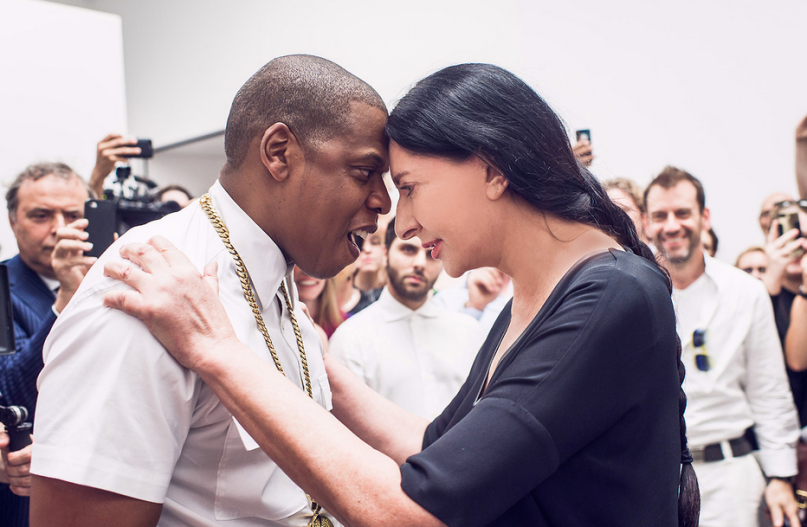
Photo via Consequence of Sound.
Want love advice from Marina? Read this.

Cait Munro

“I’m Anne Pasternak, and I’m a feminist!” boomed the recently-appointed Brooklyn Museum director. It was a straight-to-the-point opening to the institution’s annual Elizabeth A. Sackler Women in the Arts luncheon, which this year honored the self-proclaimed “grandmother of performance art,” Marina Abramović.
The Slavic performance artist opened up about her childhood, the importance of meditation (she even led an impromptu moment of reflection during the event), and why it’s hard to “have it all” as a female artist.
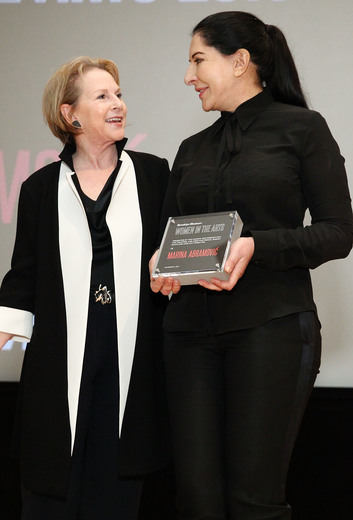
Elizabeth Sackler and Marina Abramović.
Photo: Astrid Stawiarz for Getty Images.
1. Her first US performance was at the Brooklyn Museum.
Thirty-six years ago, in 1979, Abramović performed Charged Space, European Series One at the Brooklyn Museum—her first show in the United States.
2. She didn’t know her real date of birth growing up.
Abramović has a birthday coming up at the end of the month, on November 30. But when she was growing up as a child in Serbia, she was told it was actually the 29th.
“The 29th was the date that Tito, the first president of Yugoslavia formed the country,” Abramović explained to the crowd. “And for that day, every child who had a birthday was always invited to go to Tito and get presents and candies. It was a big day. And every time the 29th of November came, and I was not invited. My mother said ‘well, that’s because you’re not good enough,’ and only until much later did I realize that I actually was never even born on the 29th, I was born on the 30th, and she was just trying to punish me.”
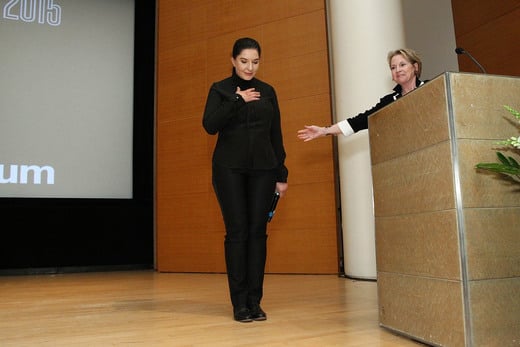
Marina Abramović.
Photo: Astrid Stawiarz for Getty Images.
3. She was jealous of Mozart.
Abramović, who says she’s known she wanted to be an artist “since always,” had her first painting exhibition at the age of 14. “[But] I was so jealous of Mozart,” she laughed, “because he made it by [age] seven!”
However, Abramović, like many artists, isn’t enamored of her early work. “The [signatures] were the worst part, because I was so impressed by Picasso, so I was signing these horrible paintings with a huge ‘Marina.’ I am so, actually, ashamed of that…I’m just thinking now how to burn them…maybe make some kind of conceptual work.”
4. Abramović’s mother refused to look at nude images of her daughter.
After her mother died, Abramović traveled to her home to sort through her belongings. “I found all of my books,” she recalls. “I’ve made like 56 of them from various exhibitions. And she actually took all of the pages where I was naked and tore them out. So the books of like 600 pages, now have 35. She could not show them to the neighbors otherwise!”
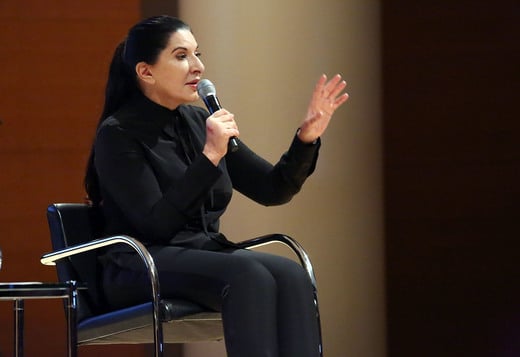
Marina Abramović.
Photo: Astrid Stawiarz for Getty Images.
5. She has a hardcore teenage fan base.
Abramović regularly receives fan mail from kids in their teens. During her 2013 Serpentine Gallery exhibition 512 Hours, for which she asked visitors to put on headphones and engage with silence, she noticed the same 12-year-old boy returning day after day to don the white headphones.” I said, ‘Why are you coming here every day?” she recalled. “And he said ‘you know, it’s really important. I used to be so bad at school, and now I go home at stand in the middle of my room and listen to silence and then…then I can do everything.”
6. Her celebrity status wasn’t her choice, she claims.
“It’s almost like, why is this my fault?” she said with regards to criticism of her overnight celebrity following the 2010 Museum of Modern Art retrospective in New York. “I didn’t do anything! It’s not my fault they put me there.”
7. She had a hard time getting the rights to perform Joseph Beuys’ How to Explain Pictures to a Dead Hare.
In advance of her Guggenheim show “Seven Easy Pieces,” for which she enacted 7 performances by other artists, she was adamant about obtaining the rights to each one, mostly as a statement against artists who perform the work of others without doing so. Unfortunately, Eva Beuys wasn’t interested in giving her the rights for How to Explain Pictures to a Dead Hare. But Marina won: she invited herself over to Eva’s for coffee, and about five hours later, the right to the performance was hers.
Another fun fact: for legal reasons, the hare she cradled in the performance had to be dead prior to being obtained. Marina’s allegedly came from a roadside in Texas.
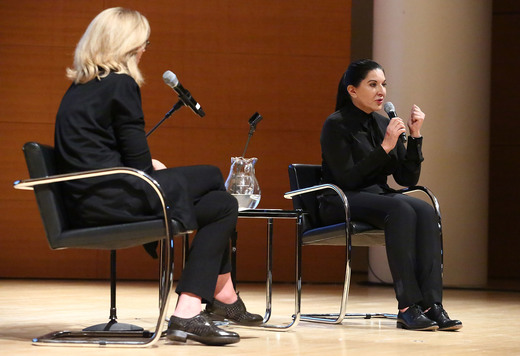
Catherine Morris and Marina Abramović.
Photo: Astrid Stawiarz for Getty Images.
8. She doesn’t “have it all,” despite appearances.
“You have to learn to deal with loneliness,” Abramović told artnet News when asked her advice for aspiring female artists. “It’s very simple, in my experience, and I see more and more, the women who really want to be artists and really want to have a strong career have to have to figure out how to balance being a mother, if they want to be a mother, because there is only so much energy in the body.”
9. Men like successful women—in theory.
“In my case, I really completely sacrificed a family life for my work. And then, you know, the thing about men is it’s very hard for a man to be with a very successful woman, especially one who may be more successful than him. That’s a really big problem. There’s a change in consciousness that’s necessary [in men] in order for this to happen. In the beginning they’re fascinated by you, but during the process of the relationship, they do everything to change you.”
“Now I’m thinking maybe I should get a turtle or something, I’m not sure, but probably even this is too much,” she said with a laugh.